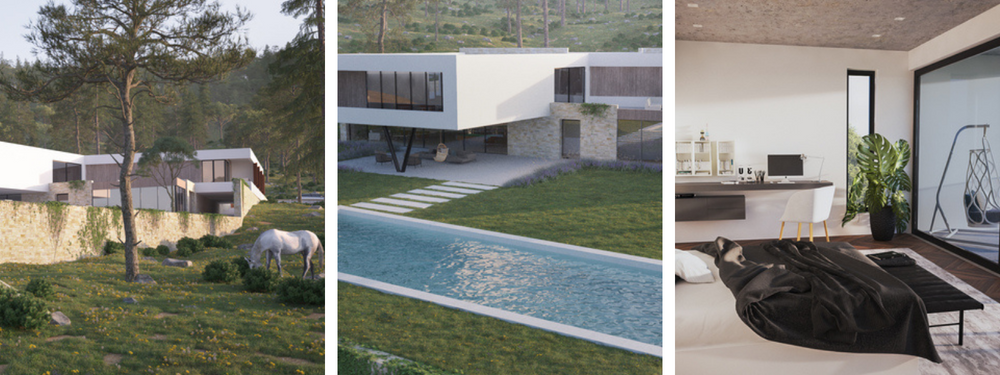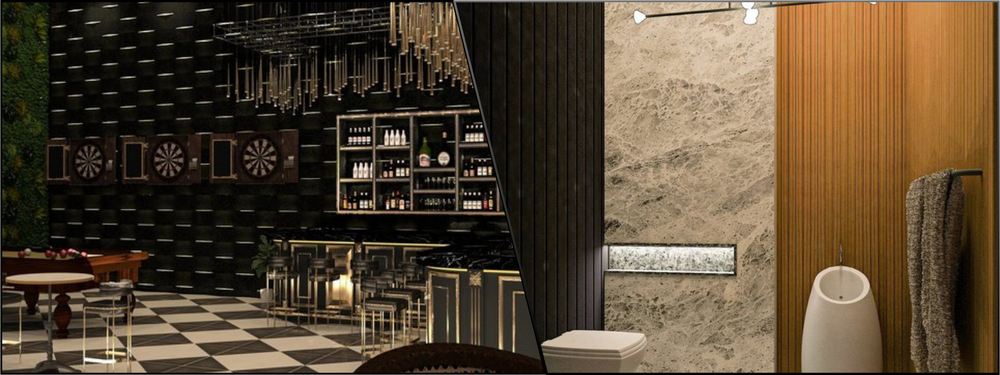The architecture, engineering, and construction (AEC) industry constantly develops and adopts new technologies to improve the design process, building maintenance, and energy consumption. Of all the recent adoptions, virtual reality (VR) and augmented reality (AR) have considerable potential to change the industry in the coming years. Both visualization and interactivity promise a better way for architects to build and present their designs to clients.
VR and AR have existed for decades, but the original adoption was slow and contained in the gaming industry. This technology has gained popularity in the architectural world in the last few years. Tech companies race to introduce practical applications and a user-friendly interface to the realm of AEC. Thanks to improved computer hardware (in terms of technical aspects and affordability), the promise of VR/AR is coming closer to widespread implementation at a reasonable price point.
Some of the most notable improvements to VR and AR:
- Advancements in hardware and software allow for high-quality 3D renderings at a faster frame rate.
- Head tracking lags are no longer noticeable. There is room for improvement, but the issue is almost unnoticeable today. Lags and poor frame rate are known to cause nausea and eyestrain.
- Head-mounted displays and typical VR/AR gear shrink in size and weight. The portability factor is better than it was a decade ago.
- Peripherals, including a remote control for an interactivity function and sensors for motion tracking, offer a more comprehensive range of options.
- Omnidirectional treadmills allow users to move freely inside the virtual environment without bumping into physical objects.
More importantly, converting BIM files or models into simulation-ready packages is the most significant improvement for architects. Modern IrisVR and Autodesk LIVE platform software can also automate conversion. Even if an architect is not familiar with the technical aspect of the technology, automation makes it easier to start implementing VR into a design.
VR and AR
Both technologies have more similarities than differences. When you wear a head-mounted display and interact with objects within a modeled environment as if you are an integral part of a video game, you are using VR.
Each time the user looks or moves around, the view of the modeled environment adjusts accordingly. You feel like you are physically moving in the digital world. Most people are more familiar with VR than AR. Readily available VR headsets are not expensive, and numerous contents, such as movies and games, are easily accessible.
AR is not as developed as VR. Many people became familiar with the technology thanks to a popular game called Pokémon Go. In the game, they must capture Pokémon that appear around them in the real world (through the phone camera lenses). AR does not create a digital environment; instead, it superimposes images of digital objects into the physical world.
With all their potential implementations, VR and AR should fit into the AEC industry. That said, every company has different views on how to take advantage of technology. The differences are not concerned with whether or not it will improve business operations but the most effective way to use it for their specific services.
RELATED: Architectural VR/AR 3D Rendering Costs, Rates & 3D Modeling Pricing for Design Firms

AEC business drivers
AEC companies that have adopted VR/AR into their business operations distinguish between the models built for internal review processes within the project team and those for communication with clients or external parties. Sometimes the project team also includes the supply chain.
- The models are used mainly by architects, engineering consultants, contractors, and sub-contractors for the internal review process. They may access the same models if collaboration with external parties is required.
- The second set of models is meant to bridge communication between the team and clients, including end-users and the funding institution. Although the models are of the same project, details might differ, especially concerning the annotation.
Depending on the company’s primary services, VR/AR may serve different purposes, for example:
Design review
Virtual reality models are used for large or complex projects, such as commercial buildings and residential homes, expected to cost millions of dollars. A significant part of the design review concerns cost and quality. Even in a big-budget project, the client wants to see the architects and engineers propose an efficient design that can ultimately reduce the overall construction cost. A sophisticated visualization may affect a client’s choice of materials and construction complexity. Clients may reject the least costly proposal if they see the difference in quality.
Marketing
Most real estate developers start their projects without having any known buyers. VR is just a type of visualization like static and animated renders, albeit sophisticated. Every developer would want to sell or at least market the property using only a plan; each sale means reduced financial risk. Now that VR gear is no longer an expensive exclusivity, the developer can provide easy access to the models through online platforms, such as social media or video-sharing sites.
The VR models should present how the building looks and feels when the construction is completed. The added interactivity feature in the model should give an edge over competitors still using static analysis renders. As online exposure gets more prominent, so does the likelihood of reaching out to a broader pool of potential buyers.
RELATED: Top 9 VR Applications for Architectural Design Companies
Portfolio
A portfolio has two purposes: an archive of past projects and a demonstration of technical competence.
An architectural firm that uses VR models as part of a project bid will be able to showcase its engineering expertise and experience. The 3d VR models do not always guarantee a win, but they give a chance to demonstrate proficiency in the tiniest details. Compared to static and animated renders, VR is a step ahead in terms of sophistication, not only in the aesthetic aspect but also in how the visualization opens the doors for close examination. It becomes a testament that an architectural firm is thorough, detail-oriented, and willing to go the extra mile to complete a project.

AEC projects of all sizes
VR used to be a privilege reserved only for big architectural or construction firms, and there are now more VR artists than in the old days. Competing tech companies drive software and hardware prices reasonably, allowing smaller firms to jump on the bandwagon without breaking the bank.
Risk avoidance is the leading business driver for large companies to incorporate VR. Big-budget projects promise sizable profits, but at the same time, it comes with potential losses. For an established firm, VR is a tool with which architects, engineering consultants, and construction managers can visualize and understand the technical challenges of a complex project. The visualization helps them devise a solution to every predicted difficulty. The objective is to minimize and eliminate even the slightest bit of uncertainty.
The main focus of VR implementation is on the marketing side of the business. Many small firms treat VR simply as a sophisticated architectural visualization, and the functionality for technical review and design refinements still needs to be fully utilized. Some firms even take components of old models and use them to build new ones.
The budget for VR visualization is most likely larger than typical architectural renderings, and it also takes more time to build interactive models. The visualization alone may require a separate team of 3d designers and modelers to collaborate with professionals in the field. The finished models can be a repository of design experience, knowledge, and reference points for future projects.
RELATED: How Virtual Reality Rendering is Changing the 3D Design Service Industry
Hidden visuals
VR users within the AEC industry have different priorities and approaches to utilizing the models. Most users focus on visualization; they create a virtual world to resemble a physical environment. The ultimate goal is to make the latter identical to the former. For many people, it is the whole point of architectural visualization. However, there is another less-explored functionality. It is possible to see the otherwise invisible technicalities within the virtual world. VR technology has developed just enough to a point where it can visualize abstract matters such as wind speed and light intensity or direction.
A 3D rendering of a building may display the amount of light that enters a particular space or room. The problem is that the rendering tries to be as photorealistic as possible, which means what you see in the image represents the real world. VR doesn’t have to be lifelike, mainly when used for technical design review.
For example, a VR model can visualize (overlay) environmental data about the heat generated by electronic devices or the intensity of light penetrating every window at different locations. Based on the data, architects may decide to make changes for energy efficiency. Unlike 3D renderings, VR can make the invisible perceivable. Freelance architectural design services and 3D AR/VR architectural services are available for AEC companies that need help implementing AR and VR solutions.
How Cad Crowd can assist
Cad Crowd has you covered from initial concept to architectural design, VR and AR simulations, prototyping, patenting, and manufacturing. Our experts are ready to assist with any AEC project, large or small. Know how it works and request a free quote to bring your architectural vision to life today.
